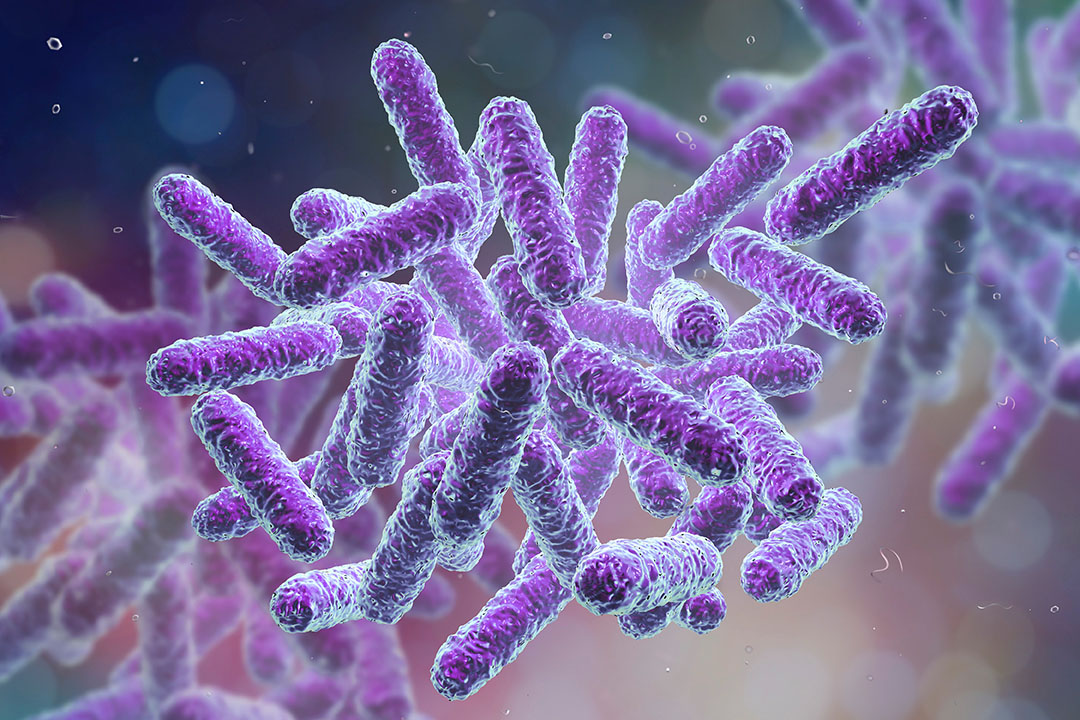Vital role of gut health on performance

Livestock gut health has a vital role to play in enabling farmers to achieve high level stock performance and productivity across all species, especially in the face of global pressures to cut the on-farm use of antibiotics.
While the background application of antibiotic growth promoters to boost livestock performance used to be accepted practice, the demands of modern agriculture requires producers to be more creative in fostering good gut health benefits to enhance growth rates, fertility, feed conversion efficiency and livestock output. Rather than relying on antibiotic growth promoters as a ‘kill-all’ treatment to clear the way for animals to progress without challenge, today’s farmers are looking increasingly towards probiotics and paraprobiotics as a way of helping them to establish a healthy gut environment in their animals. This has led to researchers targeting gut health enhancement as a major development priority. As a result, substantial progress is being made in freeing the beneficial microbiota in the gut to help boost livestock performance while, at the same time, ensuring that the impact of potentially harmful bacteria is massively reduced.
Negative-to-positive microbiota shift
Trials carried out by Phileo Lesaffre Animal Care in France, for example, showed a significant shift in the gut microbiota balance between harmful and beneficial bacteria in piglets born to sows which were given the company’s live yeast concentrate, Actisaf Sc47, during gestation and lactation. Compared with piglets in a control group, microbiota analysis from the yeast-fed piglets revealed a reduction of harmful bacteria from 58% to 6%, alongside an increase in beneficial bacteria from 42% to 94%. Translating this negative-to-positive shift in microbiota balance into improved on-farm performance is what really matters to producers, of course. Unless improvements in gut health deliver growth and productivity gains, farmers won’t be interested and won’t invest in new feeding regimes.
In this context, however, results gained from a wide range of studies have successfully demonstrated the beneficial effect of supplementing gestating and lactating sows with the solution and the impact this has on improving milk quality by increasing the concentration of IgG in both the sow’s plasma and colostrum. This, in turn, has been shown to improve the piglet’s immune response to the various pathogens to which the sow has already been exposed, thereby improving piglet gut health and performance during the suckling period.
Effect on gut microflora
In addition, work published recently by Kiros et al, included an examination of the effect of feeding the yeast product on the composition of gut microflora, the resulting inter-relationship between gut bacteria (harmful and beneficial) and the consequences this has for the performance of the animals concerned. Comparing the yeast-fed piglets with a control group, the research team found that the yeast-fed piglets had a more homogeneous microbiome than was the case with those in the control group. To apply this finding to potential on-farm gains, the team subsequently followed piglet performance through to 56 days of age, enabling them to compare feed intake, average daily gain (ADG) and feed conversion efficiency (FCR) between the 2 groups. Setting the control group’s ranking for feed intake, ADG and FCR at 100%, the comparison showed the yeast-fed piglets performed better on all counts with a ranking of 119% for feed intake, 122% for ADG and 97% for FCR.
In another trial, also designed to assess the impact of gut health enhancement on stock performance and productivity, Kiros et al collected data from 128 piglets which were divided into 4 different treatment groups, each of which was subjected to a different pre and post-weaning yeast supplementation using Actisaf Sc 47. Final results, based on a microbiota analysis of the caecum and colon contents of piglets slaughtered at day-28 post-weaning, revealed that the piglets in the post-weaning yeast supplemented groups (Yeast-Yeast and Control-Yeast) had more homogeneous microbial communities than piglets in the Control-Control and Yeast-Control groups, see Figure 1. Further analysis showed that the yeast-supplemented piglets also achieved higher average feed intake and daily weight gain performance than the piglets in the Control-Control group.
Figure 1 – Effect of yeast-supplementation on zootechnical performance parameters of piglets.

Box-Whisker plots have been used to compare zootechnical performance parameters of piglets among different pre- and post-weaning yeast supplementation regimens including Control-Control, Control-Yeast, Yeast-Control, and Yeast-Yeast.
Parameters compared included:
(a) final day (day 28 post-weaning) body weight,
(b) average daily feed intake (g per pen of 4 piglets),
(c) average daily weight gain (g per piglet), and
(d) feed conversion ratio calculated per pen of 4 piglets. Boxes denote interquartile range, with a line at the median, while whiskers are indicating minimal and maximal observations for each parameter. Superscripts denote significant difference (P < 0.05; a–c) or statistical trend (p >< 0.1; a, b).>
Benefits across all species
Giving the yeast solution to ruminant species, meanwhile, has been proven to improve rumen health and feed conversion efficiency while also reducing between-cow variations in the microbiota by balancing and stabilising the rumen ecosystem. According to researchers, this leads to a more consistent and steady response in ruminants to diet changes and other stress conditions.
Paraprobiotics, such as Safmannan, are also playing an important role In poultry production, especially as birds become increasingly capable of accepting higher levels of feed intake, a breeding-driven development which makes some birds more sensitive to disorders which can occur during their production cycle. Giving high performing birds the paraprobiotic has been shown to help reduce the effects of production stresses, alongside the maintenance of good gut health in poultry flocks.
Although current evidence linking the use of probiotics and paraprobiotics to gut health enhancement and performance gains is clearly impressive, researchers are continuing to probe new areas of understanding of the key parameters which govern growth rates, ADG and FCR. They’re also looking at how the use of probiotics and paraprobiotics impacts on gut health, especially in relation to these key parameters.
Assisted by modern sequencing techniques, scientists are now able to simultaneously measure several hundreds, or even thousands, of biochemical molecules and bacteria. This is allowing them to identify which molecular pathways are regulated by intestinal microbiota while also showing how these pathways are affected by antibiotic use, nutrition and intestinal disease. All of this new information is building on the well documented fact that intestinal microbiota is of fundamental importance for host health, helping to maintain internal stability and boost immunity, with changes in the intestinal microbiota resulting in functional, immunological and nutritional consequences for the host. It’s also helping researchers to identify how probiotics and paraprobiotics influence each phylum or genera of bacteria, so improving the feed industry’s all-round understanding of how to modulate the microbiota in a way that positively influences animal gut health under real farming conditions.
Authors: Alain Riggi & Fabio Catunda, Phileo – Lesaffre Animal Care











